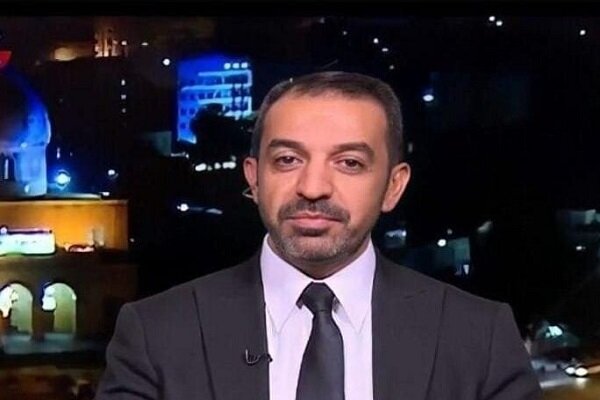Imam Khomeini was a political thinker with unifying discourse

Mehr News Agency – Imam Khomeini was not merely a religious jurist or a source of emulation; he was a political thinker who transformed Islamic jurisprudence from a personal ethical framework into a comprehensive foundation for establishing Islamic governance. The Islamic Revolution was not just a political uprising to overthrow the Shah—it was a full-scale project to redefine Iran’s cultural and civilizational identity and to return it to its Islamic essence as a unifying point of reference. The revolution was grounded in a set of essential and deeply rooted cultural elements.
Mehr News correspondent Warda Saad spoke with Dr. Ali Fazel Al-Dafa’i, spokesperson of Iraq’s Islamic Supreme Council, about this transformation. Below is the full interview:
Was Imam Khomeini successful in theorizing an Islamic model of governance within a modern state? Was he able to preserve the essence of Islamic Sharia in governance?
The revolution led by the Iranian people under Imam Khomeini (may God bless his soul) evolved into a fully-fledged movement, reshaping the very foundations of governance, state-building, and societal structure. The revolution, its leadership, and its discourse were all deeply rooted in Islamic principles and the teachings of the Holy Qur’an. It came as a surprise to many who believed that clerical attempts at state-building would inevitably fail.
Many had assumed secularism was the only viable model for modern governance. However, the Islamic Republic of Iran emerged as a modern state rooted in scientific knowledge, guided by scholars and clerics, and operated by experts—all while remaining anchored in Islamic principles. Its power stemmed from faith and commitment to Islam. The key features of this revolutionary movement, which enabled successful state-building, include:
1. Preservation of the Islamic Sharia:
Imam Khomeini sought to structure the political system around religious authority, specifically the concept of Wilayat al-Faqih (Guardianship of the Jurist). He worked to ensure that Sharia would serve as the basis of national legislation. This was institutionalized through bodies like the Guardian Council, tasked with ensuring that laws conform to Islamic principles.
2. Utilization of modern governance tools:
Imam Khomeini embraced the mechanisms of modern governance. Institutions such as the Islamic Consultative Assembly (Parliament) and the Assembly of Experts were established, representing hallmarks of a democratic system. Governance was organized with a separation of powers into executive, legislative, and judicial branches. He also frequently invoked concepts like “nation” and “popular will,” emphasizing the people’s role in shaping the Islamic movement.
Thus, Imam Khomeini was not only a jurist but a political theorist who reimagined jurisprudence as a framework for constructing a state. His concept of Wilayat al-Faqih was not a mere religious edict—it was a theory of governance.
The movement he led represented an unprecedented effort to place religion at the center of governance in a modern state—one that retained its religious and Islamic foundations. He thus established a modern yet Islamic form of governance.
Cultural Revolution and Imam Khomeini’s Vision:
Throughout history, major revolutions have often been accompanied by cultural transformations. We’ve seen such examples in countries like China, which sought intellectual and cultural liberation from colonial domination. In this context, how did Imam Khomeini conceive of cultural revolution, and how did he inject these elements into a society deeply influenced by Westernization during the Shah’s rule?
For any revolution to endure, it must remain connected to its ideological foundations and loyal constituents. This means confronting and dismantling cultural legacies that contradict the revolution’s core values, often requiring significant sacrifice.
For Imam Khomeini, the Islamic Revolution was not simply about toppling the Shah—it was a transformative mission to restore Iran’s Islamic and civilizational identity. He viewed culture not merely as literature and art, but as a structure of values, behaviors, and socio-political order.
He called for resistance to Western cultural influences and worked to institutionalize an Islamic cultural framework in alignment with revolutionary ideals. This created a decisive break with Western culture—which he saw as fundamentally at odds with human nature—and replaced it with Islam as the revolution’s foundational reference. In this framework, cultural independence was no less vital than political or economic independence. This is why Imam Khomeini frequently warned that colonial culture was more dangerous than colonial weapons.
He explicitly rejected Western intellectual frameworks such as liberalism, Marxism, and humanism, instead encouraging the development of human sciences and academic disciplines rooted in the Qur’an, the Sunnah, and Islamic jurisprudence and philosophy.
On Exporting the Revolution and Arab States’ Reactions:
With the Islamic Revolution’s victory and the Shah’s downfall, some Arab regimes became alarmed and began counter-revolutionary activities—including military aggression—to prevent the spread of revolutionary Islamic thought. Were they successful in halting this influence? And was Imam Khomeini actively seeking to export the revolution, as many have claimed?
The Islamic Revolution rested on three foundational pillars: the people, the Islamic spirit, and Imam Khomeini’s leadership. In a region where people had long been denied freedom and genuine leadership, it was natural that authoritarian regimes—both Arab and non-Arab—viewed the revolution with fear. They recognized that the experience of freedom could ignite similar demands among their own oppressed populations, threatening their survival.
Imam Khomeini’s discourse emphasized Islamic unity and transcended sectarian divides, advocating for solidarity between Shia and Sunni Muslims as part of a transnational Islamic liberation movement. His aim was not imperialism, but inspiration—motivating the masses and empowering Muslim elites to resist Western dominance and exploitation, especially given the betrayal of the Palestinian cause.
Although some Arab regimes temporarily succeeded in suppressing the revolutionary spirit, the ideas of the revolution spread widely over time. This can be observed in several key areas:
1. Arab Regimes’ Fear:
Many Gulf states saw the Islamic Revolution as a direct threat to their religious and political legitimacy. They feared the rise of Islamist movements—both Shia and Sunni—that were inspired by the Iranian model.
2. Hostility and Preemptive War:
The Iran-Iraq War, supported financially and logistically by certain Arab governments, was launched to halt the revolution’s momentum. These regimes even promoted the narrative that Iran’s revolution was sectarian rather than Islamic to diminish its appeal among Sunnis.
3. Enduring Influence of the Revolution:
Despite widespread efforts to curb its influence, the revolution’s ideas took root across several countries. Movements like Palestinian Islamic Jihad were directly inspired by it. The revolution also helped popularize anti-imperialist slogans such as “Death to America” and “Death to Israel,” which gained traction among the masses.
A Common Enemy and Trans-Sectarian Appeal:
The Islamic Republic’s firm stance against the U.S. and Israel earned it widespread support in the Muslim world. Sunni movements like Islamic Jihad and Hamas in Palestine were directly influenced by the revolution’s ideology.
Imam Khomeini’s Unifying Vision:
He consistently called for Islamic unity, giving the revolution a broad, non-sectarian appeal and making it a rallying point for Muslims of various denominations.


